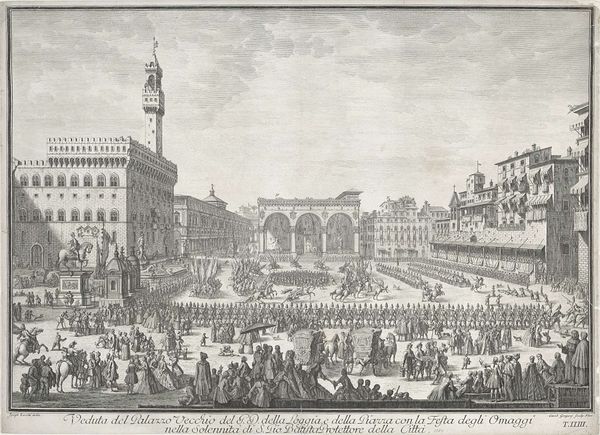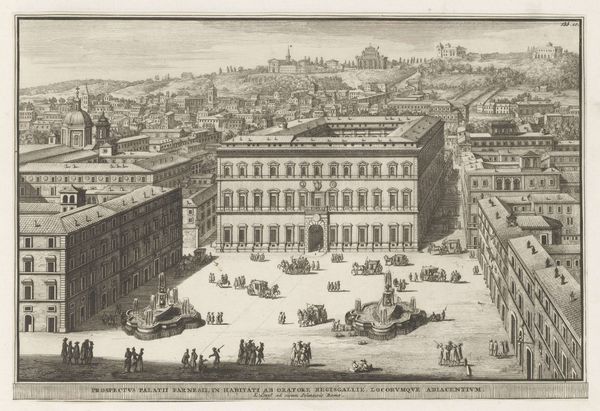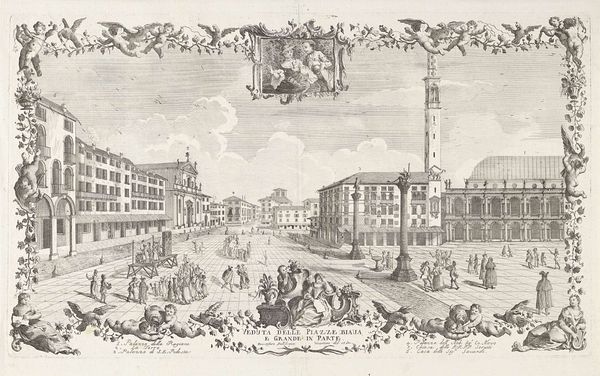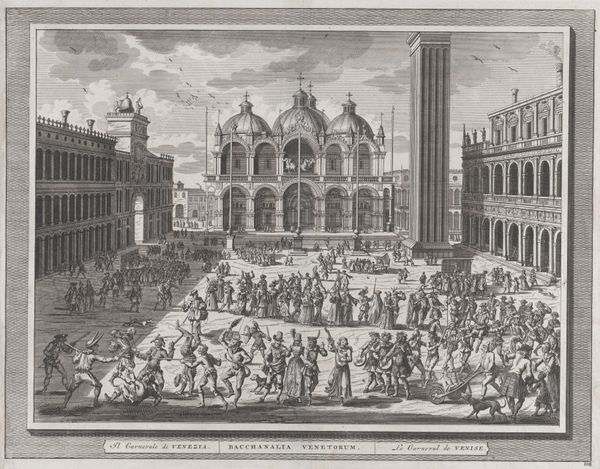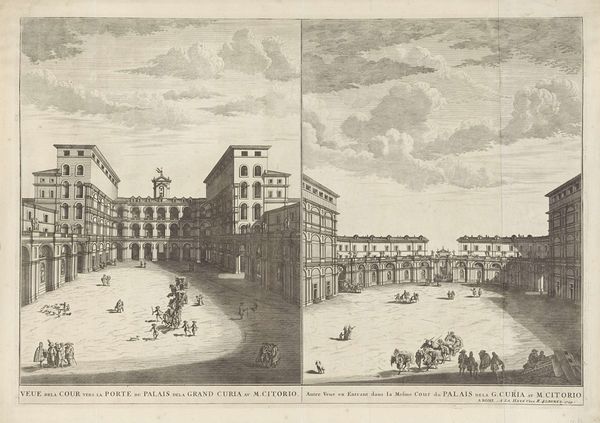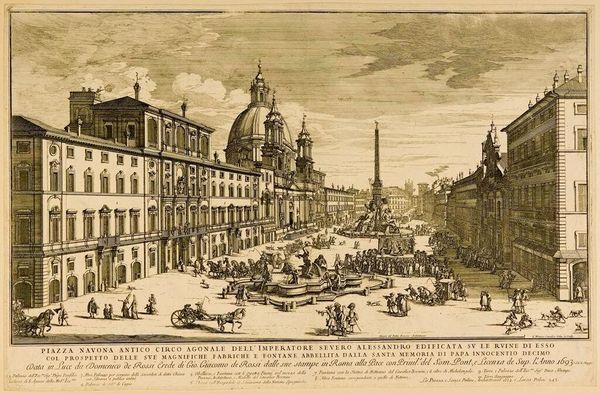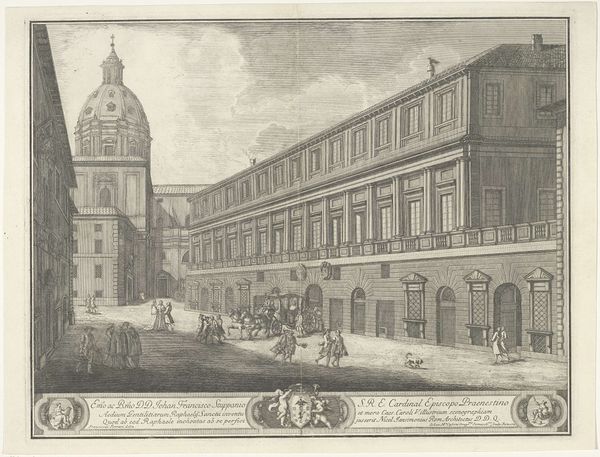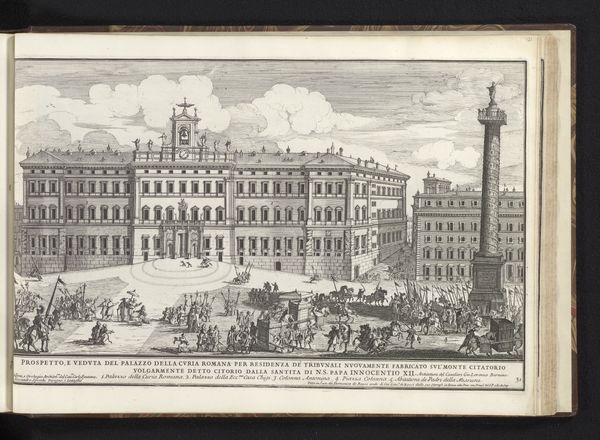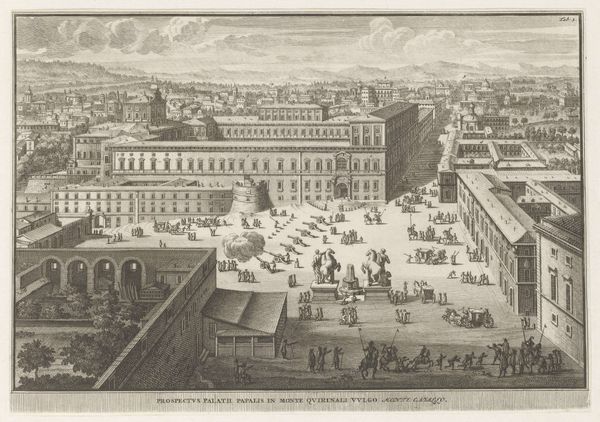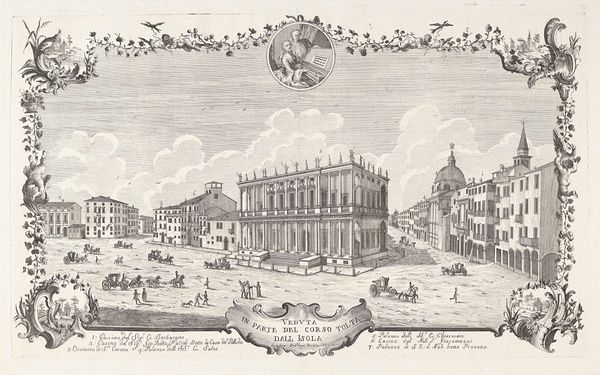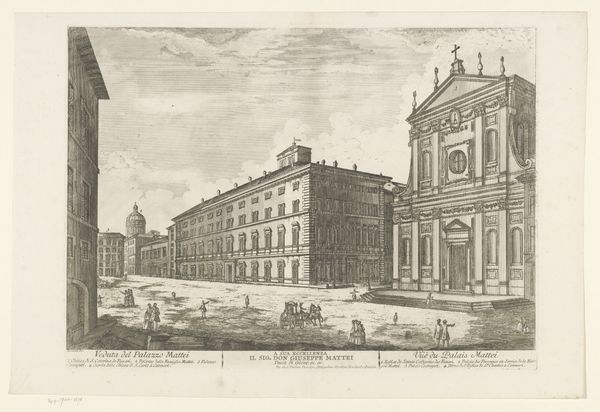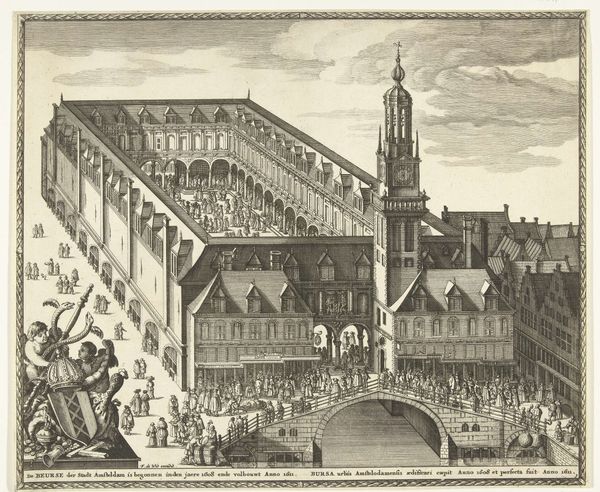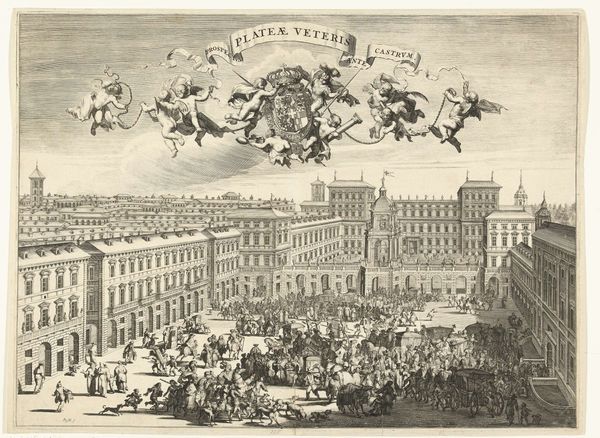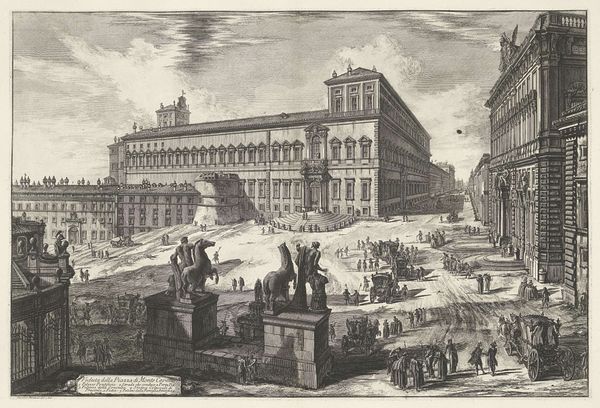
Gezicht op het Piazza Palazzo di Città (Piazza delle Erbe) met het stadhuis in Turijn 1681 - 1682
0:00
0:00
print, engraving, architecture
#
baroque
# print
#
old engraving style
#
perspective
#
square
#
cityscape
#
engraving
#
architecture
Dimensions: height 485 mm, width 610 mm
Copyright: Rijks Museum: Open Domain
Curator: Look at the texture achieved in this print! You can almost feel the grain of the paper. Editor: Yes, this engraving, made between 1681 and 1682, by Romeyn de Hooghe, offers more than meets the eye at first glance. Titled "Gezicht op het Piazza Palazzo di Città," it renders a lively depiction of Turin's Piazza delle Erbe, right in front of the town hall. The perspective draws us into a space teeming with mercantile and civic life. Curator: There’s a sense of orchestrated chaos here, a clear class structure, but I wonder how accurate it is? Whose stories are being told? Editor: Exactly. Consider the implications of perspective. Here, we see the seat of power, rendered in meticulous detail, overlooking a marketplace, but also, more importantly, legitimizing its governance. It’s fascinating how power dynamics get spatialized, even allegorized, through figures of chubby angels and crowns above the square. Who benefitted, and suffered, from those mercantile practices below? How did guild structures determine access and labor opportunities? Curator: The architectural precision feels so calculated—even in rendering such bustling, vibrant trade happening! And those little market stalls…the artist even rendered all those different textiles for sale, the baskets…You get a strong sense of the labor involved from the selection of perspective to how this thing was even physically printed—and on what kinds of presses. I love the sheer materiality. Editor: Absolutely, the means of production shaped how that vision of Turin, including its urban space and socio-political structure, was received, negotiated, and consumed! I suppose now I find myself reflecting on this particular print in relation to how we imagine public space today: who occupies it, and for what purposes? Curator: For me, I return to materiality. You are seeing all of the tiny hatch marks on the engraving – the time it must have taken to produce and how those material conditions speak volumes.
Comments
No comments
Be the first to comment and join the conversation on the ultimate creative platform.
